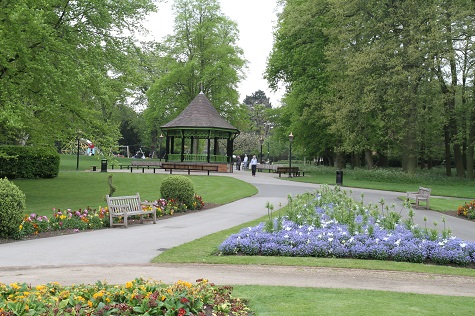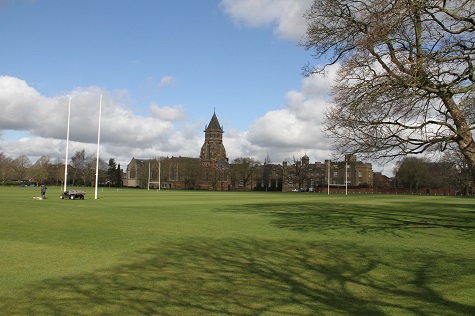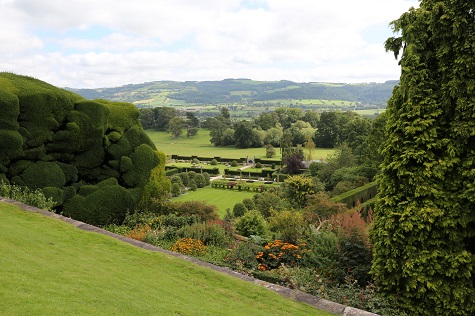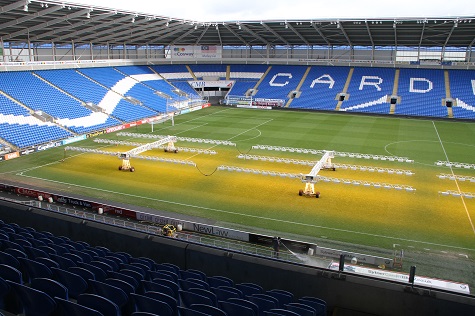A few weeks I wrote a blog about SALTEX and discussed the size of our industry in terms of how many people potentially are currently working in it. I was pleasantly surprised how many people had read the article and spoke to me about the subject.
Just to remind you I stated there are:-
- Over 2,500 golf courses in Britain, covering about 1,500 km2 - at least 0.5% of the land area.
- 418 principal (unitary, upper and second tier) councils in the UK – 27 county councils, 201 district councils, and 125 unitary councils.
- Over 2000 rugby clubs in the UK
- More than 7,000 teams of about 5,300 clubs are the members of the English football league system.
There are currently 32,113 schools in the UK. Of these, 20,925 are primary schools and 4,168 are secondary schools. There are 2,381 independent schools, 1,256 special schools and 351 pupil referral units. Most of the UK's schools are in England.
- Over 300 historic buildings owned and managed by National Trust
- Over 300,000 cricket players in the UK
- 2000 Green flag awarded parks and open spaces
All in all, we have a lot of people working in this diverse land-based industry. However, I personally see some serious challenges looming up for us in the coming years in relation to attracting the next generation of greenkeepers, groundsmen, garden and facility managers.

This has been echoed with some conversations I have had with local businesses, golf courses and local authorities who in recent times have found it difficult to recruit and retain experienced and qualified grounds staff.
There is no doubt that we as an industry need to do more to attract people into our industry - not always easy when our pay structures are generally much lower than most other professions.
Maybe we should clearly promote the potential salaries that can be on offer in this industry and not dwell on the fact of the lower starting wages.
Another problem we are currently facing is the wide spread disparity of what qualifications colleges are offering, coupled with the often dumbing down of some of our education programmes with less colleges offering specific greenkeeping /groundsmanship courses.

Having said that, both BIGGA and the IOG are seeing record numbers of people attending their education forums and associated qualifications. However, there still seems to be a void in the appropriate skill sets that need to be taught to the next generation to match the needs of the industry.
Over the last thirty years we have definitely seen a growth and development of talented individuals go on to hold prestigious posts in the industry, particularly within the private school and professional sport sectors. The real problem for the industry is retaining quality skilled people at the coal face of our industry. How do we hope to entice young people into the industry when pay scales are so poor at the entrance level?
Secondly, the work ethics of the young have changed. Not many want to get their hands dirty or even bother going to college. They want to find an easier job that often pays more than they are likely to get when taking up work in our turf care industry.

Speaking to James Mead, HG at Rugby School, he was quick to point out that often some of our own industry employers do not always recognise the skills required to maintain the diversity of their facilities, hence resulting in a lack of investment into educational opportunities for their employees.
He also stated that far too often he sees too many groundstaff not making an effort to be seen in a professional manner in terms of their appearance and how they conduct themselves. Quite often we let ourselves down and quite often we are judged by these standards. Which for many years has reflected on the salaries we get paid.
Having said that, we still have the problem of retaining their interest in our industry, especially when there are limited opportunities for them to move up the ladder and take on additional responsibilities - mainly due to the recent economic climate being quite static.
None more so than what we have witnessed in the public sector for the last fifteen years, with little or no investment in parks services, coupled with the large decrease in parks managers who have left or become disenchanted with their jobs and either left or retired.

This problem is not only being seen in the local authority sector. For a number of years we have seen many head greenkeepers also leaving the industry for one reason or another, often due to the pressure of the job or the fact that golf courses are not so financially sound as they were a number of years ago.
It takes many years to develop a skill set that enables groundsmen and greenkeepers to be good at their jobs. We just need to keep investing in these dedicated people for the benefit and future of our industry.
I firmly believe we must act now and come together with a national recruitment drive to attract and retain the next generation of groundsmen, greenkeepers and land-based personnel before it is too late.
We should be going into schools and promoting our wonderful industry, explaining in detail the wealth of opportunities it offers and the complexity of skills and opportunities to be gained whilst working within in it.

There are global opportunities for many who strive and commit themselves to this industry. We have plenty of role models who have worked their way up the ladder and enjoy the benefits this industry has to offer. You only have to look at some of the top guys; Neil Stubley (Wimbledon); Karl McDermott (Lord’s); Paul Burgess (Real Madrid); Gordon Moir (St Andrews GC); James Mead (Rugby School); Dave Roberts (Liverpool FC); Keith Kent (Twickenham RFU); all have worked their way up the ladder, are highly respected and are a credit to our industry. These, along with the thousands of others, are the curators of vast land assets that provide endless hours of enjoyment for many hundreds of thousands of people.
What other industry has a greater influence on the way we live and enjoy our pastimes?